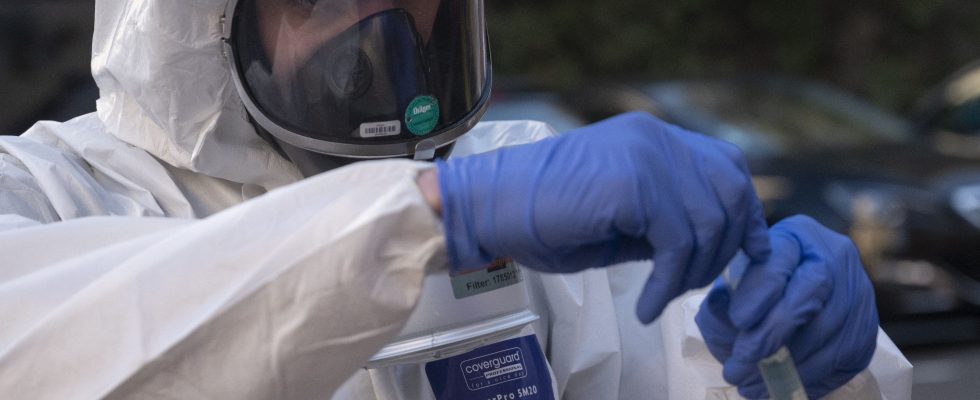Covid-19 seems to be back. But what is the level of the current wave? Difficult to answer this question based on the data available at the end of September. The counter of hospitalizations and PCR tests has been stopped for months, and the information drawn from visits to the emergency room, as well as the activity of the Sentinel (general practitioner) and SOS doctors networks, proves difficult to interpret.
A handful of scientists, however, have a more precise idea of the situation: researchers from Obépine (Epidemiological Observatory in Wastewater), who developed a method in 2020 to detect the virus in sewer water. They are currently monitoring data from around thirty wastewater treatment plants: “The recovery is very significant and locally, the circulation of the virus can reach the levels observed at the same period in previous years”, notes Professor Vincent Maréchal, virologist and co-founder of Obépine.
However, the information collected by these researchers is not intended to be made public or to serve as a tool for monitoring the epidemic. In fact, Obépine had played this role during the first two years of the pandemic. At the time, scientists were tracking up to 200 stations. But in April 2021, the government chose to separate research from surveillance, and entrusted this mission to Public Health France (SpF) and the National Agency for Food, Environmental and Occupational Health Safety (ANSES), under the aegis of the Ministry of Health. Obépine nevertheless continued its monitoring activity until April 2022, when the administration officially took control.
The thermometer was broken
From ? Nothing. The thermometer, although innovative and inexpensive, was broken. To date, nothing has come to replace it. To the great regret of epidemiologists: “This surveillance does not depend on the testing behavior of the population, nor on hospitalizations, nor on feedback from health professionals,” insists Dominique Costagliola, emeritus research director at the Pierre Louis Institute of Epidemiology. and public health. This tool also makes it possible to capture “the entire submerged part of the iceberg, the people with no or few symptoms who do not consult and fall through the wide mesh nets of current health monitoring”, adds Professor Antoine Flahault, director from the Institute of Global Health at the University of Geneva.
However, effective wastewater monitoring systems are already in place in many countries. What happened in France? “It seems that there was a lack of awareness on the part of those responsible for health monitoring of the interest of an initiative led by academics and non-medical engineers,” notes Professor Flahault. While the system built by Obépine was operational, the administrative actors started from scratch, without necessarily involving scientists in their thoughts or taking advantage of their experience.
There was thus “a pilot phase of technical validation, then a transitional phase of epidemiological validation”, indicates the Directorate General of Health (DGS). For this transitional phase, SPF and ANSES relied on twelve wastewater treatment plants, the data of which must be made freely accessible “very soon”, according to the DGS. The two structures then wanted to develop their own methodology to select the future stations included in their network – 126 in total, including 115 in mainland France.
The administrative burden did the rest: in the emergency of the pandemic, researchers benefited from accelerated procedures, for example to conclude contracts with the laboratories responsible for regional analyses. For their part, public bodies had to carry out a formal call for tenders. A stage finally closed this summer. However, the “perennial phase” has not yet started. It will be launched “in the very next few weeks”, assures the DGS, specifying that “for the new stations included, time to make the data reliable may prove necessary”. Suffice to say that we will still have to wait. “It’s a shame, because with a good level of information, the population could act accordingly and adopt protective measures in the event of increased traffic,” insists Dominique Costagliola. Like right now, for example.
